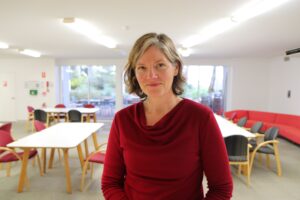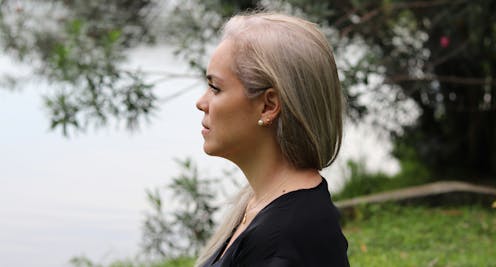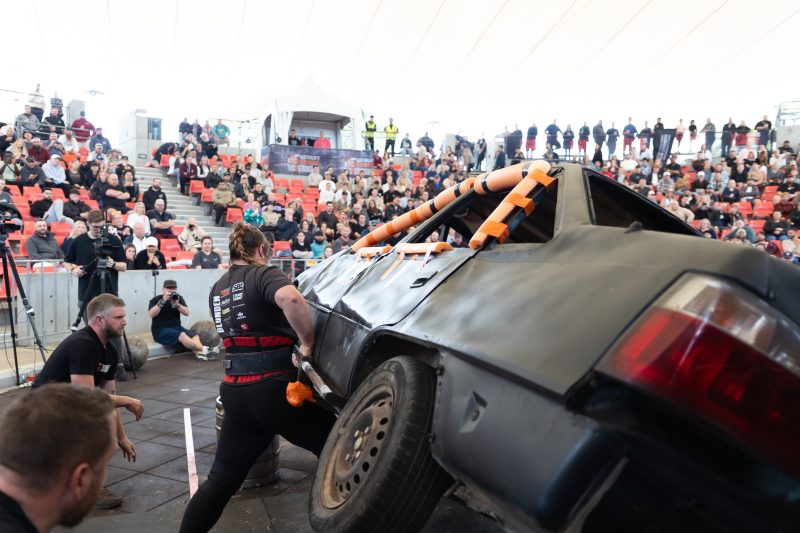*Check against delivery*
Good morning and thank you Jeff and Christina for bringing this summit together, to Mayor Lisa Lake for hosting, and to all of you for contributing to this event.
I also acknowledge my colleagues, Dr. Andrew Charlton and Sally Sitou, and I think it’s a sign of the commitment of our Government to youth mental health that you have three federal Labor MPs here today.
I acknowledge the Darug people as the traditional owners of the land on which we meet.
And pay my respects to all First Nations People who are here with us today, and to Elders past, present, and emerging.
I also recognise that First Nations people, in remote communities and in the suburbs of Western Sydney don’t have the same access to healthcare as other Australians-and that of course includes mental health care.
Which is why I’m proud to be part of a government committed to implementing the Uluru Statement from the Heart, in full. Voice, Treaty, and Truth.
To close the gap, First Nations people must have a say in policy and programs that impact them.
I would also like to acknowledge the individual and collective contributions of people with a lived and living experience of mental ill health and those bereaved by suicide.
Similarly, people who are carers of people living with mental ill-health, who love and have loved them.
Our Government is determined to help young people from all backgrounds to live healthy lives, this doesn’t just mean the absence of disease or mental ill-health but complete physical, mental and social well-being.
That is why events like today, where we get to hear directly from young people about the issues they face, are so crucial to inform the policy directions and programs of the new Government.
It’s all part of our broader approach to hearing more from people like you all.
Minister for Youth, Dr. Anne Aly is setting up five youth advisory groups, with one focused on mental health and well-being which will be meeting for the first time in Canberra next month.
We have also set up a Youth Steering Committee to support the establishment of the Office for Youth. The 15 members of the Committee represent the diversity of Australian communities including First Nations people, LGBTIQA+ communities, people from culturally and linguistically diverse backgrounds, and people with a disability.
Our intention is for young people to be heard, respected and make a meaningful contribution to the work of government.
I thank you, in advance for your contributions today and assure you that Andrew, Sally and I are listening closely to better understand your unique perspectives and to learn from your insights and experiences.
Let me start by giving you a snapshot of youth mental health in Australia.
First, over the past 15 or more years, there’s been a noticeable decline in mental health outcomes for children and young people. And that trend worsened during the COVID-19 pandemic.
Last July we got results from the Australian Bureau of Statistics’ ³Ô¹ÏÍøÕ¾ Study of Mental Health and Wellbeing, conducted in 2020-21.
16 to 24-year-olds had the highest prevalence of mental health disorders of any age group.
Over the previous 12 months – two out of five young people experienced a mental health issue. That was 50 per cent higher than in 2007.
The wider age bracket of 16 to 34 also had the highest rates of suicidal ideation and behaviour, self-harm, and disordered eating in the previous 12 months.
These figures are stark, but for all of us here today they come as no surprise. Young Australians need more mental health support.
And while the bureau of statistics did not provide separate data, young people from culturally and linguistically diverse backgrounds are more vulnerable.
Social isolation, cultural conflict, poverty, violence, and other trauma contribute powerfully to our mental health and well-being.
As well as First Nations young people, these factors are often experienced by young immigrants or children whose parents immigrated from overseas.
Today I’d like to particularly focus on young culturally and linguistically diverse people and what we are doing to make sure they can access the mental health support they need.
And I’d also like to hear from you about what else you think needs to be done, and how we can build on and improve the support to young people here in Sydney’s west.
At the national level, the Australian Government’s primary national platform for youth mental health is headspace.
In Western Sydney, headspace services can be found in Bankstown, Castle Hill, Mount Druitt and Parramatta.
We’re also adding new locations and allocating funding for improvements to existing services. eheadspace also provides free telephone and web-based support services.
Last financial year, almost 100,000 young people accessed face to face services through headspace. Of those clients, almost 11 per cent identified as culturally diverse.
Clearly, many young people are using headspace, which is good. Support services are there to be used.
But we know more can be done to make the services culturally relevant and safe.
Last year headspace ³Ô¹ÏÍøÕ¾ established a Refugee and Migrant Team, which is developing a multicultural strategy for all headspace services.
It’s also working with young people and partner organisations on a number of initiatives to improve services and reduce stigma for culturally and linguistically diverse young people experiencing mental health difficulties.
They include the “Strength in My Roots” campaign and initiatives with partner organisations such as REVERB, Cultural Conversations, and peer work training modules for multicultural workers.
Another is the Visible project, a platform where young people share their stories of mental ill-health.
For multicultural communities, the Government also funds “Embrace”, a national online platform with accessible mental health information resources in 31 languages, and services.
Last month, I was delighted to launch the new Translating and Interpreting Services for PHN-funded mental health services.
This means interpreting services are available to all headspace and adult mental health hubs.
With one in five Australians speaking a language other than English at home, quality, safe interpreting services will remove a significant barrier to accessing mental health support. The services are there, but we are making them more equitable and accessible.
At the regional level, the Government funds Primary Health Networks to plan and commission local mental health and suicide prevention services.
It also provides culturally appropriate mental health literacy and suicide prevention programs for Hazara, Tamil, South Sudanese and Arabic communities.
Here in Western Sydney there are a number of mental health services specifically for young people:
The Youth Enhanced Support Service, or YESS, outreach program provides mental health support, treatment, and case management.
And the Early Psychosis Youth Services program, delivered from headspace in Mount Druitt and Parramatta, provides early intervention treatment and support for young people experiencing psychosis for the first time, or at very high risk of this.
Young people over 16 can also use Safe Space, an alternative to the emergency department for people in mental health crisis or distress.
The PHN also provides funding to youth programs run by community organisations-the Baabayn program for teenage girls, Youth off the Streets run by Dunlea Youth Service, headfyrst provided by the Salvation Army, and Pathways ³Ô¹ÏÍøÕ¾, run by Community Restorative Centre.
All of these services are designed with cultural diversity in mind.
They have bilingual support workers as well as peer workers, and all staff are trained in cultural sensitivity.
The PHN also supports the South Sudanese Youth Ambassador Program, which began as a pilot during the pandemic.
It promotes health, wellbeing, connectedness and mental health literacy among young South Sudanese people in Western Sydney.
More than 7,000 South Sudanese refugees or migrants live in New South Wales.
The majority of South Sudanese refugees in New South Wales live here in Cumberland and Blacktown council areas, and more half younger than 19.
All of these youth mental health services and programs are having a positive impact.
Before I finish I’d like to also mention the Australian Government’s national Program of Assistance for Survivors of Torture and Trauma, otherwise known as PASTT.
PASTT as it is known provides tailored, life-long support to people, including children and youth, who have come to Australia through our humanitarian migration program.
We’re funding PASTT, to allow these people to lead mentally healthy, contributing lives.
In NSW, PASTT is delivered by the Service for the Treatment and Rehabilitation of Torture and Trauma Survivors.
Here in Western Sydney, and across the nation, we’re working to break down cultural stigma around mental ill health;
and we’re working with communities, partner organisations and the states and territories to provide the most welcoming experience to young people from diverse backgrounds, when they do seek help.
I acknowledge that whilst there are many stories of success, there are also many stories of how the system hasn’t worked.
I am here today because I want to hear these stories from you – and to work alongside you to improve the system so it works for every young Australians.
Thank you.







